Brazilian Odyssey 2 (Philips Videopac+ G7400) Cartridges
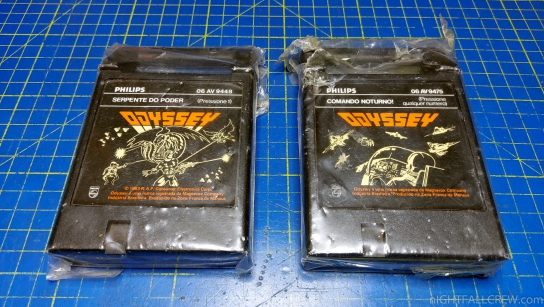
Brazilian Odyssey 2 (Philips Videopac+ G7400) Games:
- 06 AV 9448 Serpente do Poder! Translation: “Power Snake!”
- 06 AV 9475 Comando Noturno! Translation: “Night Commando!”

Brazilian Odyssey 2 (Philips Videopac+ G7400) Games:
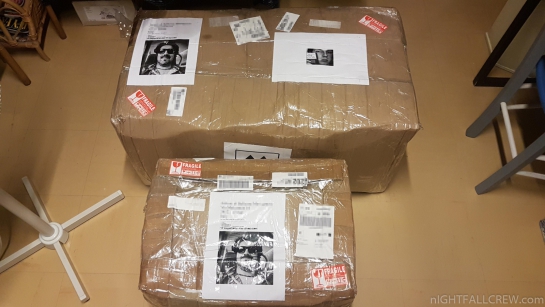
Some retro-things received from my friend Gerben.
Some RS-232 Gender Changer, Null Modem, RS-232 Tester and unknown cables.
The Frankenstein ZX-81 it works! the keyboard not but is not a problem of the keyboard but of the missing connections of the matrix, maybe an unfinished project ?
Gallery:
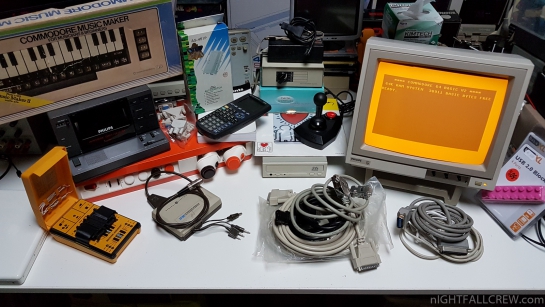
Some retro-Trash things received from a friend. Thanks Gerben.
Below the list.
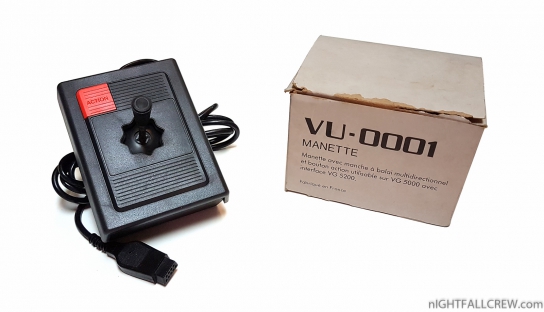
The VU-0001 joystick can be used with the VG-5000 Computer series equipped with a VG-5200 interface.
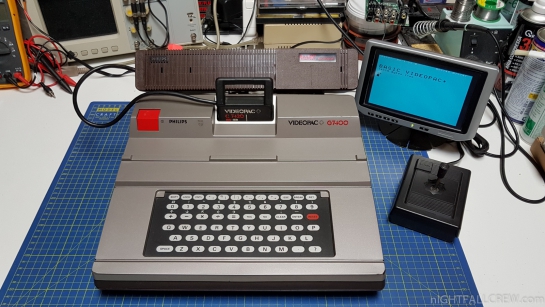
Philips Videopac+ G7400 RGB/Composite Hack – Repair – Recap
I have received a gift from my dear friend Andrea Pierdomenico a Videopac+ G7400 console with the BASIC Microsoft module and some cartridges that go into my collection of videopac cartridges.
This console running smoothly but with some problems.
The works that have been made:
Videopac+ G7400 RGB/Composite Hack (components that need to be added):
All the works that have been made are documented in the photos below:
source: g7400 guide rgb mod
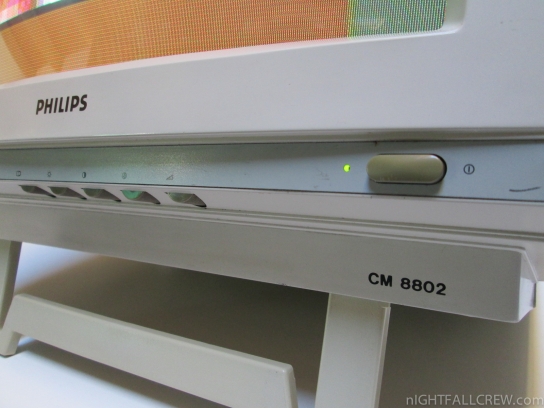
Autopsy:
The Philips Monitor CM8802/00G is an excellent RGB monitor 14” suitable to use with Amiga and Atari ST.
Electronically is identical to the monitor Philips CM 8833, but compared to the latter one we can’t find the TTL RGB (DIN) input and the switching for Color/Monochrome, but is always present the composite (RCA) and Audio which makes it perfectly for computers with this type of output.
Cleaning comparison (before / after):
Defects:
Works that have been made:
Download:
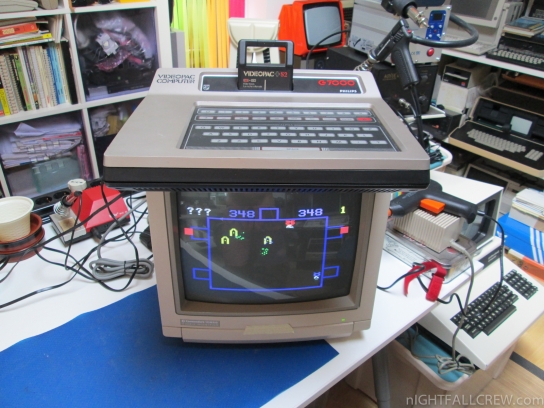
Details:
I have found this RGB mod for the Philips Videopac G7000 console fom the gamesx site and i have decided to build the circuit to see if it works.
This mod is not easy to do, especially if one has no experience in electronics, however the result at the end is spectacular.
RGB DAC Schematics (click to zoom):
Download: Philips VideoPac G7000 Schematics (1960)
source: gamesx.com
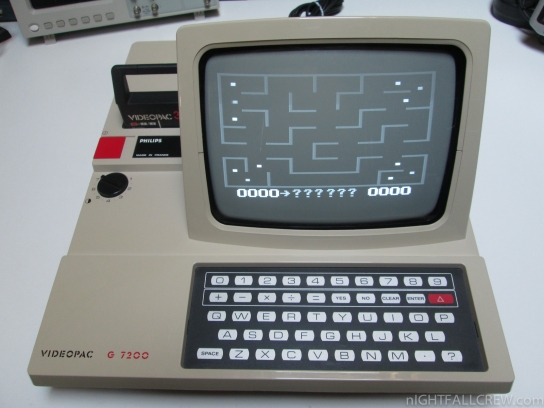
Autopsy:
The RGB cable of Schneider (radiola/philips) VG-5000 computer is compatible with the VideoPac G7200.
from Wikipedia:
The Magnavox Odyssey², known in Europe as the Philips Videopac G7000, in Brazil as the Philips Odyssey, in the United States as the Magnavox Odyssey² and the Philips Odyssey², and also by many other names, is a video game console released in 1978.
In the early 1970s, Magnavox was an innovator in the home video game industry. They succeeded in bringing the first home video game system to market, the Odyssey, which was quickly followed by a number of later models, each with a few technological improvements (Magnavox Odyssey Series). In 1978, Magnavox, now a subsidiary of North American Philips, released the Odyssey², its new second-generation video game console.
In Europe, the Odyssey² did very well on the market. In Europe, the console was most widely known as the Philips Videopac G7000, or just the Videopac, although branded variants were released in some areas of Europe under the names Philips Videopac C52, Radiola Jet 25, Schneider 7000, and Siera G7000. Philips, as Magnavox’s Dutch parent company, used their own name rather than Magnavox’s for European marketing. A rare model, the Philips Videopac G7200, was only released in Europe; it had a built-in black-and-white monitor. Videopac game cartridges are mostly compatible with American Odyssey² units, although some games have color differences and a few are completely incompatible. A number of additional games were released in Europe that never came out in the US.
Download: Philips VideoPac G7200 Schematics (1515)
Playing Munchkin game:
source: wikipedia
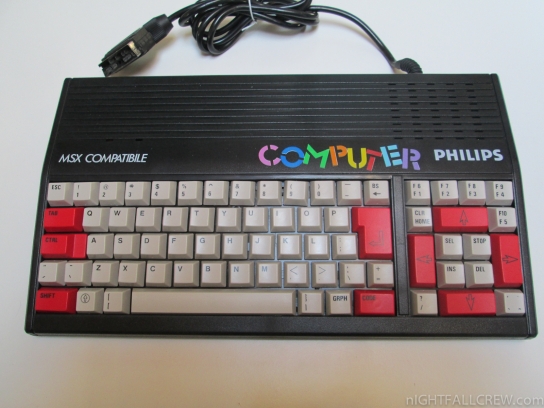
Autopsy:
from Old-Computer Museum:
The NMS-801 was one of the last MSX machine made by Philips. This economical computer was a true MSX machine. The official MSX logo was although replaced on the case by the “MSX Compatible” mark because the MSX standard required a cartridge slot, which the NMS-801 had not.
The NMS-801 was only sold in Italy where it wasn’t very successful because of its poor expansion capabilities. However, Philips used the same case, CPU and video chip to produce the NMS-3000 and 4000, two video terminals dedicated to the Italian Videotel network, a precursor to the Internet which enabled each Italian family to access large databases as well as sending messages to one another.
source: old-computers.com
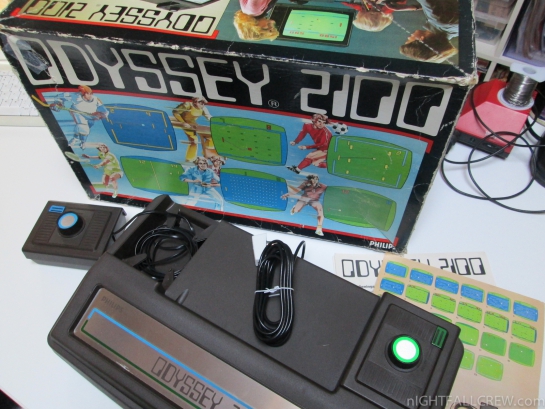
Autopsy:
from Wikipedia homepage:
The Odyssey 2100 was released in 1978 and uses the same case design as the 2001. Using the National Semiconductor MM-57186N chip, the 2100 plays 6 games with multiple varitions: Wipe-Out (Breakout style, 7 variants), Flipper (7 variants), Tennis (2 variants), Handball (2 variants), Ice Hockey (2 variants), Football (3 variants).
The Magnavox Odyssey was a general brand name of the company’s complete line of home video game consoles released from 1972 through 1978. The line includes the original Magnavox Odyssey console, both Magnavox and Philips versions of the Odyssey series of dedicated video game consoles, and the Magnavox Odyssey² cartridge-based video game console released in 1978.
source: wikipedia
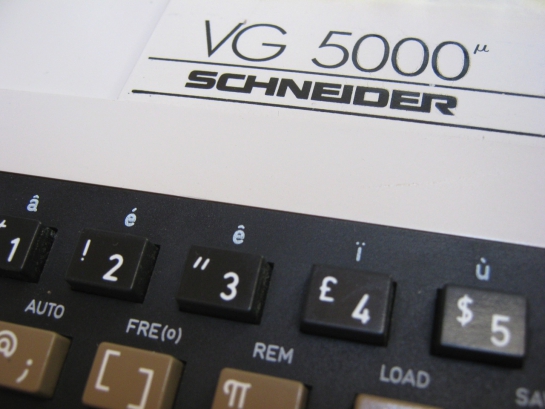
Autopsy:
from Old-Computers Museum:
Radiola and Schneider became Philips subsidiaries in 1990 when Philips bought the French Schneider TV assembly plant located in Le Mans – the West of France – and then named Radiotechnique (RTC). The Radiola, Schneider and Philips VG-5000 were exactly same machines, apart from the case colour. They were conceived and manufactured in the RTC Le Mans factory and only intended for the French market.
At the time, RTC also made the “Minitel”, a phone video terminal almost each French family owned. To save costs, the VG-5000 keyboard was thus taken from the Minitel and slightly altered. Several Philips computer were also sold under Radiola and Schneider names, among them, the VG-8000 and VG-8020. Although it was sold under three brand names, the VG-5000 didn’t sell well, because of its limited capacities, rare and expensive peripherals, and lack of good software.
source: old-computers.com vg5k.free.fr
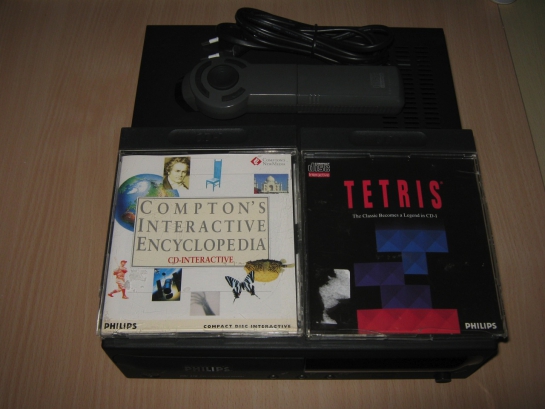
Autopsy:
from Wikipedia:
CD-i, or Compact Disc Interactive, is the name of an interactive multimedia CD player developed and marketed by Royal Philips Electronics N.V. CD-i also refers to the multimedia Compact Disc standard used by the CD-i console, also known as Green Book, which was developed by Philips and Sony (not to be confused with MMCD, the pre-DVD format also co-developed by Philips and Sony).
Work on the CD-i began in 1984 and it was first publicly announced in 1986.[2] The first Philips CD-i player, released in 1991 and initially priced around USD $700,[3] is capable of playing interactive CD-i discs, Audio CDs, CD+G (CD+Graphics), Karaoke CDs, and Video CDs (VCDs), though the last requires an optional “Digital Video Card” to provide MPEG-1 decoding.
Games ISO Download: gametronik.com
source: wikipedia
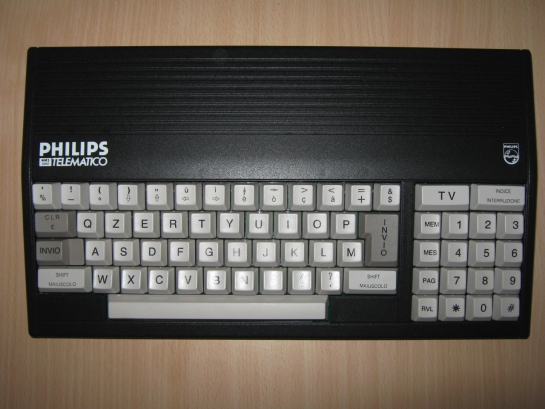
Autopsy:
The Philips NMS-3000 and 4000 are two video terminals dedicated to the Italian Videotel network, a precursor to the Internet which enabled each Italian family to access large databases as well as sending messages to one another.
source: wikipedia
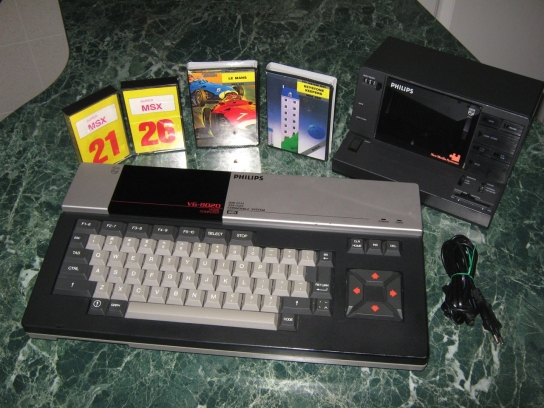
Autopsy:
MSX was the name of a standardized home computer architecture in the 1980s conceived by Kazuhiko Nishi, then Vice-president at Microsoft Japan and Director at ASCII Corporation. It is said that Microsoft led the project as an attempt to create unified standards among hardware makers.
from Wikipedia:
On 27 June 1983, the date considered the birthday of the MSX standard, the MSX was formally announced during a press-conference, and a slew of big Japanese firms declared their plans to introduce machines. The Japanese companies avoided the intensely competitive US home computer market, which was in the throes of a Commodore-led price war.
Only Spectravideo and Yamaha briefly marketed MSX machines in the US. Spectravideo’s MSX enjoyed very little success, and Yamaha’s CX5M model, built to interface with various types of MIDI equipment, was billed more as a digital music tool than a standard personal computer.
source: wikipedia
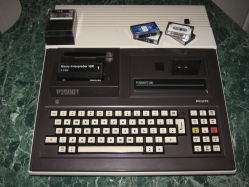
Autopsy:
from Wikipedia:
The Philips P2000T home computer was Philips’ first real entry in the home computer market, after the Philips Videopac G7000 game system (better known in the U.S. as the Magnavox Odyssey2) which they already sold to compete with the Atari 2600 and similar game systems.
There was also an P2000M version with an additional 80-column card for use with a monochrome monitor. This version shipped with a monitor cabinet also housing a dual 5.25″ floppy drive. Basically the P2000T was a Z80 based home computer that used a Teletext display chip to produce the video picture and a small Mini Cassette recorder for mass storage (42 kByte).
 The mini cassette was seen as a floppy drive from the user perspective using the automatic search for a program (CLOAD command) or free space (CSAVE). A command to display the directory of the cassette does also exist. Philips used components they already produced for other markets (television sets and dictation machines) to quickly design a small computer system. It was partially designed by Austrian professor Dieter Hammer.
The mini cassette was seen as a floppy drive from the user perspective using the automatic search for a program (CLOAD command) or free space (CSAVE). A command to display the directory of the cassette does also exist. Philips used components they already produced for other markets (television sets and dictation machines) to quickly design a small computer system. It was partially designed by Austrian professor Dieter Hammer.
They also copied the ROM cartridge system from their Videopac G7000 game system. One of these cartridges contained Microsoft BASIC. It was also possible to use cassette tape floppys.
source: wikipedia
Recent Comments